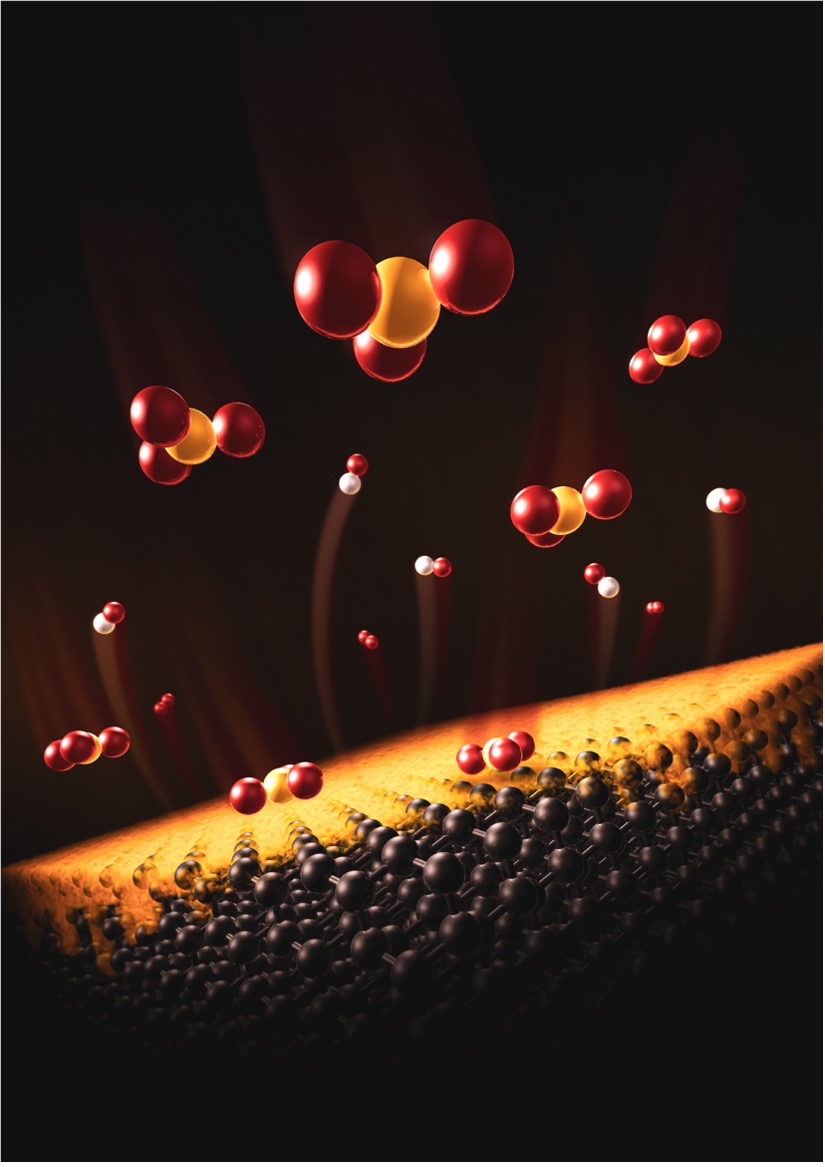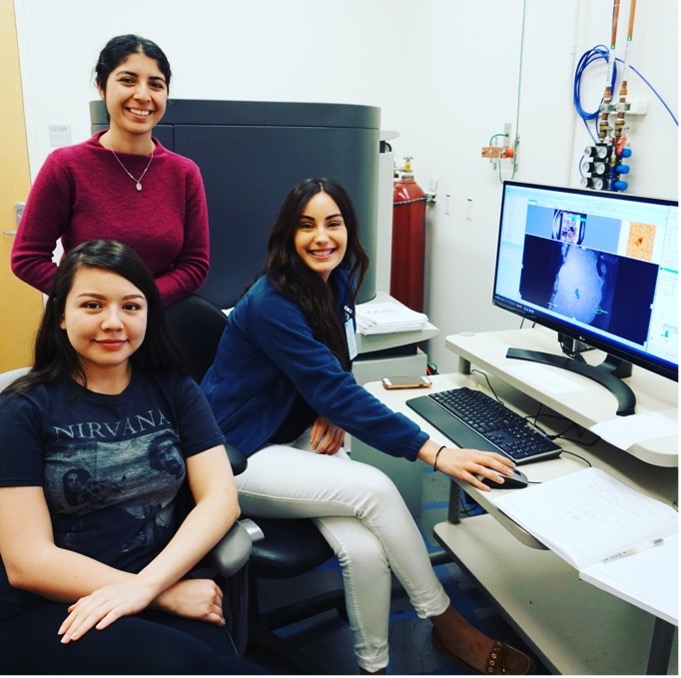By Renée Haran

When diamonds are crushed in ball milling, they are blown into ultrafine nanodiamonds. Further processing of nanodiamonds introduces tiny defects into their lattice structures; carbon atoms are knocked out of the nanodiamond lattice in an atomic-level game of billiards.
While they don’t sparkle like their carat-sized counterparts, nanodiamonds have a secret: the missing carbons leave them with nitrogen-vacancy (NV) centers, vacancies whose chemical properties can be used to make quantum bits or qubits – the basic unit of information in quantum sensing and computing.
But nanodiamonds’ superpower needs protection, and while difficult to accomplish, their carbon lattices can be adorned with other atoms, such as boron. Coating them with boron helps keep their secret quantum capabilities intact.
Under the guidance of Foundry user Abraham Wolcott, a group of diverse graduate and undergraduate student researchers from San Jose State University (SJSU), with training and support from Imaging facility staff member Virginia Altoé through the Foundry’s User Program, have successfully grown ultrathin boron layers on the surface of nanodiamonds. The researchers, many of which have gone on to have shining careers in science, published their findings in Nanomaterials.
How to encrust your diamond
The SJSU team discovered that ultrathin boron layers can be grown on nanodiamonds at room temperature in air-free conditions. Boron layering occurs due to the formation of covalent bonds – when atoms share electrons, creating a stable balance of push-and-pull forces between the atoms, bonding them like a sheet – between nanodiamond’s carbon lattice and boron.
In a process similar to atomic layer deposition (ALD), a method commonly used in microelectronics for depositing thin films of atoms, layer by layer, the researchers first oxidized the nanodiamond surface to make it alcohol rich – covered with oxygen-hydrogen or OH molecules.
“It’s like cleaning your oven of the caked-on food stuff and leaving a sparkling oven, but instead, we have a sparkling (light tan) diamond powder,” said Wolcott.
The researchers then treated the alcohol-rich nanodiamonds with boron compounds to form boron-boron bonds, layering the nanodiamond’s carbon surface with a thin film of boron.
Researchers characterized the newly formed boron-rich nanodiamond using Foundry facilities including electron microscopy, scanning and transmission microscopy (SEM and TEM), and X-ray photoelectron spectrometry (XPS).
Nanodiamonds may be too tiny to wear, but when mixed with electron-loving boron compounds, the future of nanodiamonds shines bright. Possible applications for boron-blinged nanodiamonds include enhancing Boron Neutron Capture Therapy (BNCT) to treat one of cancer’s darkest nemesis: glioblastomas, in addition to quantum sensing, electron-emission, and neurological imaging capabilities.
The SJSU team filed a patent for their work in August of 2023. Krishna Govindaraju, who is currently pursuing a Ph.D. in chemical and bioengineering at the University of Buffalo in New York, wrote the patent application. His graduate thesis on alcohol-rich fluorescent nanodiamonds was the foundation for much of the research, in addition to Wolcott and team’s previous work coating nanodiamonds with amines and silica.
Supporting the next generation of scientists
Beyond growing nanodiamond scaffolds, Wolcott has spent his career developing inclusive environments and nurturing opportunities for underrepresented researchers in his labs.
Speaking on having access to the Molecular Foundry’s facilities, Wolcott said, “That’s where the rubber hits the road for historically underrepresented researchers (in STEM). They get to be in a world-class institution with access to million-dollar pieces of instrumentation. They get to do it themselves.”
Interested in Becoming a Foundry User?
Join our collaborative, multidisciplinary environment.
Learn more >
Wolcott’s nanodiamond cohort included many people of color and women who are doing exciting things in STEM, including Tyanna Supreme. Supreme was an undergraduate research assistant in Wolcott’s lab and is one of the lead authors of the nanodiamond paper.
She is currently pursuing a Ph.D. in molecular genetics at the University of Toronto, Canada and is studying how the common bacterial infection, H. pylori, can trigger the formation of stomach cancer. “I don’t think that I would have even thought about doing a Ph.D. if I hadn’t joined Dr. Wolcott’s lab,” Supreme said.
Cynthia Melendrez is another one of those women. Melendrez generated samples and collected data on the nanodiamond-boron project, in addition to analyzing XPS data at the Foundry. Today, she is the Stanford Synchrotron Radiation Lightsource (SSRL) Instrumentation Manager at the SLAC National Accelerator Laboratory.
Melendrez fondly remembers the Foundry’s XPS logbook. She was among the first five users of a “brand spanking new” instrument, fitting her trips to the Foundry between classes and driving up to Berkeley from SJSU.

“It was an incredible feeling,” Melendrez said. “First, I’m using this really expensive piece of equipment. Second, now, I’m trained and have the trust to be able to do it on my own. It gave me more pride. It gave me more power.”
Virginia Altoé, principal scientific engineering associate in the Foundry’s Imaging and Manipulation of Nanostructures facility, was excited to see such a diverse group of young students come through the Foundry.
While STEM workforce numbers are still far from where they need to be, representation for women and other marginalized communities is increasing. According to the National Science Foundation’s 2023 Diversity and STEM report, the number of underrepresented minorities and women in the STEM workforce increased over the last decade – with women’s share increasing 31% from 9.4 to 12.3 million and overall racial diversity up by 18%. Folks like Wolcott and Altoé, who are committed to creating access for those who need it most, are partly to thank.
“I think democratizing science is not just a word. It’s an action,” said Altoé.

